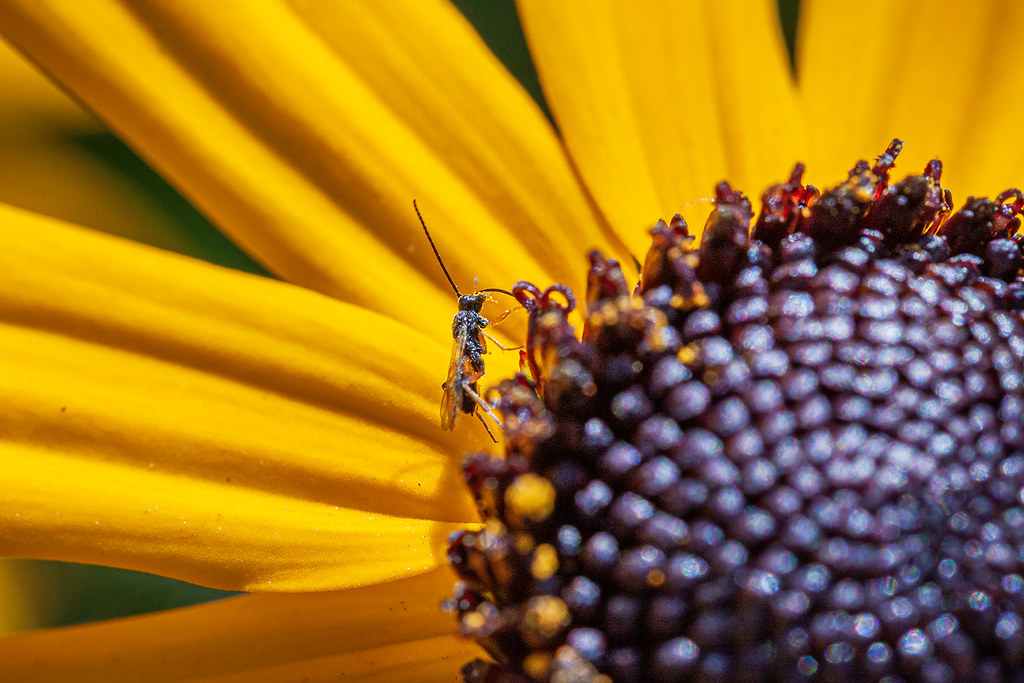#feng wei photography
Text

Tibetan sand fox (Vulpes ferrilata)
By Feng Wei Photography / Getty Images
#feng wei photography#photographer#getty images#tibetan sand fox#fox#vulpes ferrilata#animal#mammal#wildlife#nature
156 notes
·
View notes
Video
20221226_F0001: Wind moon by Wei-Feng Xue
Via Flickr:
- From that time over #10YearsAgo I braced strong winds to do some night photography in Scarborough. This is a full moon in the wind.
#hill#coast#seaside#cliff#beach#moon#light#sea#water#cloudy#windy#sky#night#stars#landscape#long exposure#flickr
2 notes
·
View notes
Text
It’s the Year of the Dragon in the Chinese zodiac associated with good fortune, wisdom and success
This past Saturday, Feb. 10, marked the beginning of the Lunar New Year. Also known as the Chinese New Year or Spring Festival, it is celebrated in China and in Chinese communities around the world.
Dragons on display in Shanghai. A dragon image is often used to symbolize China itself.
Feng Wei Photography/Moment via Getty Images
Mario Poceski, University of Florida
Among China’s traditional holidays and celebrations, none ranks higher in importance than the Lunar New Year (????). Also known as the Spring Festival (??), or simply Chinese New Year, it marks the beginning of the year…
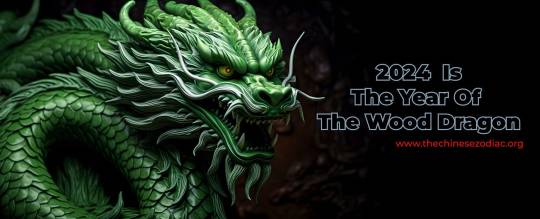
View On WordPress
1 note
·
View note
Photo

Mother Bear And Three Cubs by Feng Wei Photography
Mother grizzly bear and her three cubs in Katmai National Park, Alaska USA. Image provided by Getty Images.
0 notes
Photo
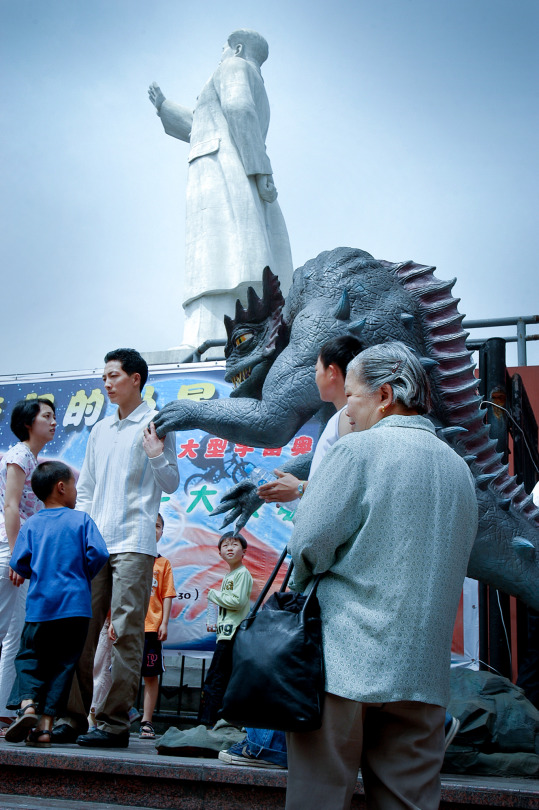

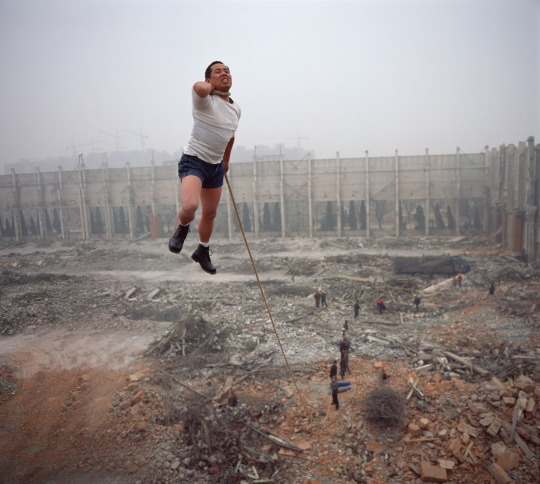
From White Night by Feng Li
From Combing for Ice and Jade by Kurt Tong
Live at the high place 1 by Li Wei 李暐
And more found here: Photography of China
1 note
·
View note
Photo
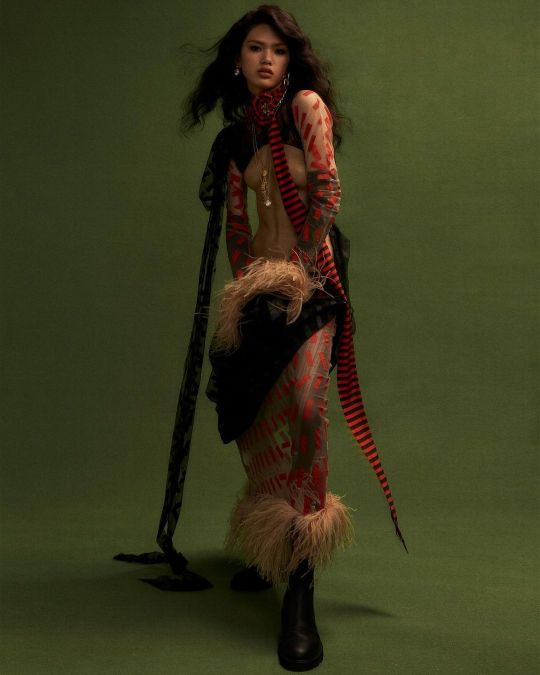

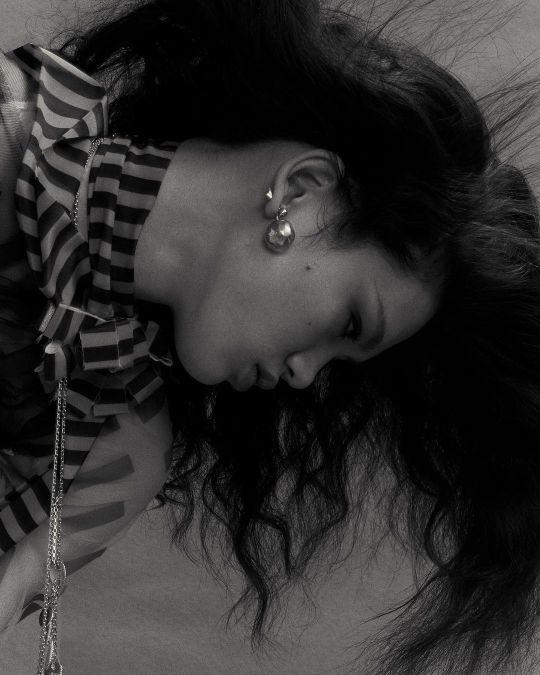
Marie Claire China June 2021, Editorial "Venus in Grunge". Tulle dress with tape print, Maison Margiela by John Galliano, Défilé Spring 2021 collection. Leather corset, Jacques Wei.
Photographer Zuo Shutong, Model Qun Ye, styled by Austin Feng
#Maison Margiela#Margiela#Maison Margiela by John Galliano#John Galliano#Galliano#fashion#editorial#Austin Feng#Zuo Shutong#Shutong Zuo#Ye Ri Qun#Qun Ye#Marie Claire#Marie Claire China#ss21#model#style#fashion photography#Jacques Wei
97 notes
·
View notes
Photo

A red panda has reddish fur, a masked face, and a banded tail.
Feng Wei Photography / Getty Images
16 notes
·
View notes
Photo

c1tylight5:Mount Tianmen | Feng Wei Photography https://georgianadesign.tumblr.com/post/189535229027
5 notes
·
View notes
Photo

Ngozumpa Glacier from Gokyo Ri, Nepal © Feng Wei Photography / Getty Images #Hidante #TheAddictTraveller #GharBahira #VisitNepal #Himalaya #Gokyo (at Nepal) https://www.instagram.com/p/CSf7eT6o3Dy/?utm_medium=tumblr
0 notes
Text
~下载~ [緝魂 The Soul HD] 电影
缉魂 完整版本 [ The Soul] 完整版觀看電影在線小鴨 (2020-HD)完整的電影
PLAY>>> http://ver.yess-movie.com/movie/tt13598976/the-soul.html
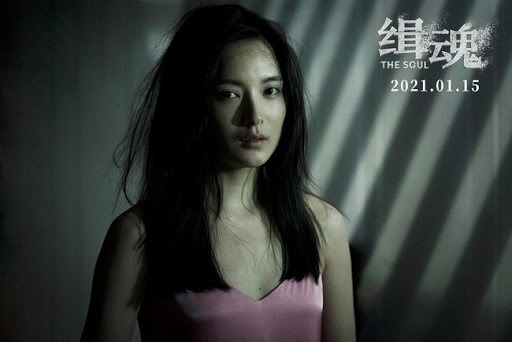
著名集团董事长王世聪惨死家中,负责此案的检察官梁文超(张震 饰)与妻子刑警阿爆(张钧甯 饰)在调查中得知:死者的儿子王天佑(林晖闵 饰),年轻的新婚妻子李燕(孙安可 饰),多年合伙人万宇凡(李铭顺 饰),甚至死去的前妻唐素贞(张柏嘉 饰),每个人之间都有着错综复杂的关联。阿爆更是发现隐藏在案件背后的惊人秘密……
发布日期: 2021–01–15
运行时间: 124 分钟
类型: 剧情, 惊悚, 悬疑
明星: Chang Chen, Janine Chang, Christopher Ming-Shun Lee, Anke Sun, Lu Hsueh-Feng
导演: Cheng Wei-Hao
PLAY>>> http://ver.yess-movie.com/movie/tt13598976/the-soul.html

TAGS:
缉魂 澳門上映
缉魂 2020上映
缉魂 HD線上看
缉魂 線上看小鴨
缉魂 电影完整版
缉魂 線上看下載
缉魂 2020 下載
缉魂 線上看完整版
缉魂 線上看完整版小鴨
缉魂 (2020)完整版本
缉魂 |1080P|完整版本
缉魂 线上看(2020)完整版
線上看(2020)完整版
缉魂 線上看電影(2020)
缉魂 2020年再次觀看電影
缉魂 線上看|2020上映|完整版小鴨|線上看小鴨|
缉魂 上看
缉魂 主題曲
缉魂 小鴨影音
缉魂 線上小鴨
缉魂 完整版本
缉魂 香港上映
缉魂 線上看小鴨影音
缉魂 2020 線上看
缉魂在线
缉魂 1080P 下載
缉魂 免費線上看電影
缉魂 电影在线2020年
缉魂 (2020)在线观看
缉魂 [2020]观看和下载
缉魂 [2020,HD]观看和下载
缉魂 singapora(2020) 完整版
缉魂 (The Soul) 2020上映
缉魂 (The Soul) HD線上看
缉魂 (The Soul) 線上看小鴨
缉魂 (The Soul) 电影完整版
缉魂 (The Soul) 線上看下載
缉魂 (The Soul) 2020 下載
缉魂 (The Soul) 線上看完整版小鴨
缉魂 (The Soul) (2020)完整版本
缉魂 (The Soul) |1080P|完整版本
缉魂 (The Soul) 线上看(2020)完整版
缉魂 (The Soul) 線上看(2020)完整版
缉魂 (The Soul)(2020)
缉魂 (The Soul)2020年再次觀看電影
缉魂 (The Soul) 線上看|2020上映|完整版小鴨|線上看小鴨|
缉魂 (The Soul) 澳門上映
缉魂 (The Soul) 2020上映
缉魂 (The Soul) HD線上看
缉魂 (The Soul) 線上看小鴨
缉魂 (The Soul) 电影完整版
缉魂 (The Soul) 線上看下載
缉魂 (The Soul) 2020 下載
缉魂 (The Soul)上看完整版
缉魂 (The Soul) 線上看完整版小鴨
缉魂 (The Soul) (2020)完整版本
缉魂 (The Soul) |1080P|完整版本
缉魂 (The Soul) 线上看(2020)完整版
缉魂 (The Soul) 線上看(2020)完整版
缉魂 (The Soul) 線上看電影(2020)
缉魂 (The Soul) 2020年再次觀看電影
缉魂 (The Soul) 線上看|2020上映|完整版小鴨|線上看小鴨|
缉魂 (The Soul) 上看
缉魂 (The Soul) 主題曲
缉魂 (The Soul) 小鴨影音
缉魂 (The Soul) 線上小鴨
缉魂 (The Soul) 完整版本
缉魂 (The Soul) 香港上映
缉魂 (The Soul) 線上看小鴨影音
缉魂 (The Soul) 2020 線上看
缉魂 (The Soul) 2020在线
缉魂 (The Soul) 1080P 下載
缉魂 (The Soul) 免費線上看電影
缉魂 (The Soul) 电影在线2020年
缉魂 (The Soul) (2020)在线观看
缉魂 (The Soul) [2020]观看和下载
缉魂 (The Soul) [2020,HD]观看和下载
缉魂 (The Soul) singapora(2020) 完整版
缉魂 (The Soul) 線上看| 2020最新電影| 小鴨影音|
缉魂 (The Soul) 免費下載
缉魂 (The Soul) 下載 百度
缉魂 (The Soul) 2020上看
缉魂 (The Soul) 免費線上看電影
缉魂 (The Soul) -完整版小鴨 HD
缉魂 (The Soul)上看(2020)
缉魂 (The Soul) 台灣上映 2020
缉魂 (The Soul) (2020) 線上看
缉魂 (The Soul)上(2020 HD)
缉魂 (The Soul) 2020 電影完整版
缉魂 (The Soul) 2020 線上 完整版
缉魂 (The Soul) -完整版 小鴨 2020
缉魂 (The Soul) 免費在線觀看(2020)
缉魂 (The Soul) [2020] 線上完整版
缉魂 (The Soul) 线上看(2020)完整版
缉魂 (The Soul)上 [2020] 完整版
缉魂 (The Soul) (2020)免費線上看電影
缉魂 (The Soul) 線上看線上(2020)完整版
缉魂 (The Soul) -HD 完整版 小鴨 [2020]
缉魂 (The Soul) 上看2020 HD.BD.1080p
缉魂 (The Soul) HD|1080p|4K| 香港流媒體
缉魂 (The Soul) 2020完整版 小鴨 (HD.BLURAY)
In 1889, on November 1 in Gotha, Germany Anna Therese Johanne Hoch, who later would be known as Hannah Hoch was born. Being the eldest of five children, the girl was brought up in a comfortable and quiet environment of the small town. Her parents, a supervisor in an insurance company and an amateur painter sent her to Girl’s High school. However, at the age of 15 Hannah had to quit studying for the long six years to take care of her newborn sister. Only in 1912 she continued her education with Harold Bengen in School of Applied Arts, mastering glass design. As the World War I broke up Hannah returned to the native town to work in the Red Cross.
The first years after war the young woman recommenced her studying, getting to know graphic arts. 1915 was highlighted by an acquaintance with an Austrian artist Raoul Hausmann, which grew into the long-lasting romantic relationship and involvement in Berlin Dada movement. For ten years till 1926 Hoch worked in Berlin’s major publisher of newspapers and magazines. Her task was to design embroidering, knitting and crocheting patterns for the booklets.
Being on vacation with her beloved in 1918, Hannah discovered ‘the principle of photomontage in cut-and-paste images that soldiers sent to their families’ (National gallery of Art). This find affected greatly on her artistic production, and she created mass-media photographs comprising the elements of photomontage and handwork patterns, thus combining traditional and modern culture. Her prior preoccupation was to represent the ‘new woman’ of the Weimar Republic with new social role and given freedoms.
Hoch was the only woman in Berlin Dada, who took part in all kinds of events and exhibitions showcasing her socially critical works of art. Till 1931 she participated in exhibitions but with the rise of National Social regime was forbidden to present her creative work. Till her last breath in 1978 Hannah Hoch lived and worked in the outskirts of Berlin-Heiligensee.
The piece of art which is going to be analyzed in this research is ‘The beautiful girl’ designed in 1919–1920. It combines the elements of technology and females. In the middle of the picture one can clearly see a woman dressed in a modern bathing suit with a light bulb on her head which probably serves as a sun umbrella. In the background a large advertisement with a woman’s hair-do on top is presented. Maud Lavin describes strange human as ‘she is part human, part machine, part commodity’ (Lavin). The woman is surrounded by the images of industrialization as tires, gears, signals and BMW logos. A woman’s profile with the cat eyes, untrusting and skeptical, in the upper right corner is eye-catching as well. This unusually large eye symbolizes DADA movement — a monocle, which is present in almost every Hoch’s work. The colour scheme does not offer rich palette of tints, including mostly black, white, orange and red pieces. The photo is surrounded by the BMW circles which add the spots of blue.
An apt description of the piece is given in the book ‘Cut with the Kitchen Knife’ and states that it is ‘a portrait of a modern woman defined by signs of femininity, technology, media and advertising’ (Lavin). In other words Hannah Hoch focused on the woman of the new age, free and keeping up with the fast-moving world. The artist promoted feministic ideas and from her point of view urbanization and modern technologies were meant to give hope to woman to gain equality of genders. With this photomontage she commented on how the woman was expected to combine the role of a wife and mother with the role of a worker in the industrialized world. The light bulb instead of a face shows that women were perceived as unthinking machines which do not question their position and can be turned on or off at any time at man’s will. But at the same time they were to remain attractive to satisfy men’s needs. The watch is viewed as the representation of how quickly women are to adapt to the changes.
In a nutshell, Hoch concentrated on two opposite visions of the modern woman: the one from the television screens — smoking, working, wearing sexy clothes, voting and the real one who remained being a housewife.
The beautiful girl’ is an example of the art within the DADA movement. An artistic and literal current began in 1916 as the reaction to World War I and spread throughout Northern America and Europe. Every single convention was challenged and bourgeois society was scandalized. The Dadaists stated that over-valuing conformity, classism and nationalism among modern cultures led to horrors of the World War I. In other words, they rejected logic and reason and turned to irrationality, chaos and nonsense. The first DADA international Fair was organized in Berlin in 1920 exposing a shocking discontentment with military and German nationalism (Dada. A five minute history).
Hannah Hoch was introduced to the world of DADA by Raoul Hausman who together with Kurt Schwitters, Piet Mondrian and Hans Richter was one of the influential artists in the movement. Hoch became the only German woman who referred to DADA. She managed to follow the general Dadaist aesthetic, but at the same time she surely and steadily incorporated a feminist philosophy. Her aim was to submit female equality within the canvass of other DADA’s conceptions.
Though Hannah Hoch officially was a member of the movement, she never became the true one, because men saw her only as ‘a charming and gifted amateur artist’ (Lavin). Hans Richter, an unofficial spokesperson shared his opinion about the only woman in their community in the following words: ‘the girl who produced sandwiches, beer and coffee on a limited budget’ forgetting that she was among the few members with stable income.
In spite of the gender oppressions, Hannah’s desire to convey her idea was never weakened. Difficulties only strengthened her and made her an outstanding artist. A note with these return words was found among her possessions: ‘None of these men were satisfied with just an ordinary woman. But neither were they included to abandon the (conventional) male/masculine morality toward the woman. Enlightened by Freud, in protest against the older generation. . . they all desired this ‘New Woman’ and her groundbreaking will to freedom. But — they more or less brutally rejected the notion that they, too, had to adopt new attitudes. . . This led to these truly Strinbergian dramas that typified the private lives of these men’ (Maloney).
Hoch’s technique was characterized by fusing male and female parts of the body or bodies of females from different epochs — a ‘traditional’ woman and ‘modern’, liberated and free of sexual stereotypes one. What’s more, combining male and female parts, the female ones were always more distinctive and vibrant, while the male ones took their place in the background. Hannah created unique works of art experimenting with paintings, collages, graphic and photography. Her women were made from bits and pieces from dolls, mannequins of brides or children as these members of the society were not considered as valuable.
Today Hannah Hoch is most associated with her famous photomontage ‘Cut with the kitchen knife DADA through the last Weimer Beer-Belly Cultural epoch of Germany’ (1919–1920). This piece of art highlights social confusion during the era of Weimar Republic, oppositionists and government radicals (Grabner). In spite of never being truly accepted by the rest of her society, this woman with a quiet voice managed to speak out loud her feministic message.
Looking at Hannah Hoch’s art for the first time I found it confusing, because couldn’t comprehend the meaning. It was quite obvious that every single piece and structure is a symbol of the era, its ideas and beliefs. However, after having learned about her life and constant endeavors to declare about female’s right, little by little I started to realize what’s what. As an object for research I chose ‘The beautiful girl’ as, to my mind, its theme and message intersects with the modern tendency: a successful, clever, beautiful and free woman has to become one in no time, cause the world is moving faster and faster. I enjoyed working with this artist as her example is inspiring and is worth following.
0 notes
Text
【TW-电影】 緝魂 我线上看
缉魂 完整版本 [ The Soul] 完整版觀看電影在線小鴨 (2020-HD)完整的電影
PLAY>>> http://ver.yess-movie.com/movie/tt13598976/the-soul.html

著名集团董事长王世聪惨死家中,负责此案的检察官梁文超(张震 饰)与妻子刑警阿爆(张钧甯 饰)在调查中得知:死者的儿子王天佑(林晖闵 饰),年轻的新婚妻子李燕(孙安可 饰),多年合伙人万宇凡(李铭顺 饰),甚至死去的前妻唐素贞(张柏嘉 饰),每个人之间都有着错综复杂的关联。阿爆更是发现隐藏在案件背后的惊人秘密……
发布日期: 2021–01–15
运行时间: 124 分钟
类型: 剧情, 惊悚, 悬疑
明星: Chang Chen, Janine Chang, Christopher Ming-Shun Lee, Anke Sun, Lu Hsueh-Feng
导演: Cheng Wei-Hao
PLAY>>> http://ver.yess-movie.com/movie/tt13598976/the-soul.html

TAGS:
缉魂 澳門上映
缉魂 2020上映
缉魂 HD線上看
缉魂 線上看小鴨
缉魂 电影完整版
缉魂 線上看下載
缉魂 2020 下載
缉魂 線上看完整版
缉魂 線上看完整版小鴨
缉魂 (2020)完整版本
缉魂 |1080P|完整版本
缉魂 线上看(2020)完整版
線上看(2020)完整版
缉魂 線上看電影(2020)
缉魂 2020年再次觀看電影
缉魂 線上看|2020上映|完整版小鴨|線上看小鴨|
缉魂 上看
缉魂 主題曲
缉魂 小鴨影音
缉魂 線上小鴨
缉魂 完整版本
缉魂 香港上映
缉魂 線上看小鴨影音
缉魂 2020 線上看
缉魂在线
缉魂 1080P 下載
缉魂 免費線上看電影
缉魂 电影在线2020年
缉魂 (2020)在线观看
缉魂 [2020]观看和下载
缉魂 [2020,HD]观看和下载
缉魂 singapora(2020) 完整版
缉魂 (The Soul) 2020上映
缉魂 (The Soul) HD線上看
缉魂 (The Soul) 線上看小鴨
缉魂 (The Soul) 电影完整版
缉魂 (The Soul) 線上看下載
缉魂 (The Soul) 2020 下載
缉魂 (The Soul) 線上看完整版小鴨
缉魂 (The Soul) (2020)完整版本
缉魂 (The Soul) |1080P|完整版本
缉魂 (The Soul) 线上看(2020)完整版
缉魂 (The Soul) 線上看(2020)完整版
缉魂 (The Soul)(2020)
缉魂 (The Soul)2020年再次觀看電影
缉魂 (The Soul) 線上看|2020上映|完整版小鴨|線上看小鴨|
缉魂 (The Soul) 澳門上映
缉魂 (The Soul) 2020上映
缉魂 (The Soul) HD線上看
缉魂 (The Soul) 線上看小鴨
缉魂 (The Soul) 电影完整版
缉魂 (The Soul) 線上看下載
缉魂 (The Soul) 2020 下載
缉魂 (The Soul)上看完整版
缉魂 (The Soul) 線上看完整版小鴨
缉魂 (The Soul) (2020)完整版本
缉魂 (The Soul) |1080P|完整版本
缉魂 (The Soul) 线上看(2020)完整版
缉魂 (The Soul) 線上看(2020)完整版
缉魂 (The Soul) 線上看電影(2020)
缉魂 (The Soul) 2020年再次觀看電影
缉魂 (The Soul) 線上看|2020上映|完整版小鴨|線上看小鴨|
缉魂 (The Soul) 上看
缉魂 (The Soul) 主題曲
缉魂 (The Soul) 小鴨影音
缉魂 (The Soul) 線上小鴨
缉魂 (The Soul) 完整版本
缉魂 (The Soul) 香港上映
缉魂 (The Soul) 線上看小鴨影音
缉魂 (The Soul) 2020 線上看
缉魂 (The Soul) 2020在线
缉魂 (The Soul) 1080P 下載
缉魂 (The Soul) 免費線上看電影
缉魂 (The Soul) 电影在线2020年
缉魂 (The Soul) (2020)在线观看
缉魂 (The Soul) [2020]观看和下载
缉魂 (The Soul) [2020,HD]观看和下载
缉魂 (The Soul) singapora(2020) 完整版
缉魂 (The Soul) 線上看| 2020最新電影| 小鴨影音|
缉魂 (The Soul) 免費下載
缉魂 (The Soul) 下載 百度
缉魂 (The Soul) 2020上看
缉魂 (The Soul) 免費線上看電影
缉魂 (The Soul) -完整版小鴨 HD
缉魂 (The Soul)上看(2020)
缉魂 (The Soul) 台灣上映 2020
缉魂 (The Soul) (2020) 線上看
缉魂 (The Soul)上(2020 HD)
缉魂 (The Soul) 2020 電影完整版
缉魂 (The Soul) 2020 線上 完整版
缉魂 (The Soul) -完整版 小鴨 2020
缉魂 (The Soul) 免費在線觀看(2020)
缉魂 (The Soul) [2020] 線上完整版
缉魂 (The Soul) 线上看(2020)完整版
缉魂 (The Soul)上 [2020] 完整版
缉魂 (The Soul) (2020)免費線上看電影
缉魂 (The Soul) 線上看線上(2020)完整版
缉魂 (The Soul) -HD 完整版 小鴨 [2020]
缉魂 (The Soul) 上看2020 HD.BD.1080p
缉魂 (The Soul) HD|1080p|4K| 香港流媒體
缉魂 (The Soul) 2020完整版 小鴨 (HD.BLURAY)
In 1889, on November 1 in Gotha, Germany Anna Therese Johanne Hoch, who later would be known as Hannah Hoch was born. Being the eldest of five children, the girl was brought up in a comfortable and quiet environment of the small town. Her parents, a supervisor in an insurance company and an amateur painter sent her to Girl’s High school. However, at the age of 15 Hannah had to quit studying for the long six years to take care of her newborn sister. Only in 1912 she continued her education with Harold Bengen in School of Applied Arts, mastering glass design. As the World War I broke up Hannah returned to the native town to work in the Red Cross.
The first years after war the young woman recommenced her studying, getting to know graphic arts. 1915 was highlighted by an acquaintance with an Austrian artist Raoul Hausmann, which grew into the long-lasting romantic relationship and involvement in Berlin Dada movement. For ten years till 1926 Hoch worked in Berlin’s major publisher of newspapers and magazines. Her task was to design embroidering, knitting and crocheting patterns for the booklets.
Being on vacation with her beloved in 1918, Hannah discovered ‘the principle of photomontage in cut-and-paste images that soldiers sent to their families’ (National gallery of Art). This find affected greatly on her artistic production, and she created mass-media photographs comprising the elements of photomontage and handwork patterns, thus combining traditional and modern culture. Her prior preoccupation was to represent the ‘new woman’ of the Weimar Republic with new social role and given freedoms.
Hoch was the only woman in Berlin Dada, who took part in all kinds of events and exhibitions showcasing her socially critical works of art. Till 1931 she participated in exhibitions but with the rise of National Social regime was forbidden to present her creative work. Till her last breath in 1978 Hannah Hoch lived and worked in the outskirts of Berlin-Heiligensee.
The piece of art which is going to be analyzed in this research is ‘The beautiful girl’ designed in 1919–1920. It combines the elements of technology and females. In the middle of the picture one can clearly see a woman dressed in a modern bathing suit with a light bulb on her head which probably serves as a sun umbrella. In the background a large advertisement with a woman’s hair-do on top is presented. Maud Lavin describes strange human as ‘she is part human, part machine, part commodity’ (Lavin). The woman is surrounded by the images of industrialization as tires, gears, signals and BMW logos. A woman’s profile with the cat eyes, untrusting and skeptical, in the upper right corner is eye-catching as well. This unusually large eye symbolizes DADA movement — a monocle, which is present in almost every Hoch’s work. The colour scheme does not offer rich palette of tints, including mostly black, white, orange and red pieces. The photo is surrounded by the BMW circles which add the spots of blue.
An apt description of the piece is given in the book ‘Cut with the Kitchen Knife’ and states that it is ‘a portrait of a modern woman defined by signs of femininity, technology, media and advertising’ (Lavin). In other words Hannah Hoch focused on the woman of the new age, free and keeping up with the fast-moving world. The artist promoted feministic ideas and from her point of view urbanization and modern technologies were meant to give hope to woman to gain equality of genders. With this photomontage she commented on how the woman was expected to combine the role of a wife and mother with the role of a worker in the industrialized world. The light bulb instead of a face shows that women were perceived as unthinking machines which do not question their position and can be turned on or off at any time at man’s will. But at the same time they were to remain attractive to satisfy men’s needs. The watch is viewed as the representation of how quickly women are to adapt to the changes.
In a nutshell, Hoch concentrated on two opposite visions of the modern woman: the one from the television screens — smoking, working, wearing sexy clothes, voting and the real one who remained being a housewife.
The beautiful girl’ is an example of the art within the DADA movement. An artistic and literal current began in 1916 as the reaction to World War I and spread throughout Northern America and Europe. Every single convention was challenged and bourgeois society was scandalized. The Dadaists stated that over-valuing conformity, classism and nationalism among modern cultures led to horrors of the World War I. In other words, they rejected logic and reason and turned to irrationality, chaos and nonsense. The first DADA international Fair was organized in Berlin in 1920 exposing a shocking discontentment with military and German nationalism (Dada. A five minute history).
Hannah Hoch was introduced to the world of DADA by Raoul Hausman who together with Kurt Schwitters, Piet Mondrian and Hans Richter was one of the influential artists in the movement. Hoch became the only German woman who referred to DADA. She managed to follow the general Dadaist aesthetic, but at the same time she surely and steadily incorporated a feminist philosophy. Her aim was to submit female equality within the canvass of other DADA’s conceptions.
Though Hannah Hoch officially was a member of the movement, she never became the true one, because men saw her only as ‘a charming and gifted amateur artist’ (Lavin). Hans Richter, an unofficial spokesperson shared his opinion about the only woman in their community in the following words: ‘the girl who produced sandwiches, beer and coffee on a limited budget’ forgetting that she was among the few members with stable income.
In spite of the gender oppressions, Hannah’s desire to convey her idea was never weakened. Difficulties only strengthened her and made her an outstanding artist. A note with these return words was found among her possessions: ‘None of these men were satisfied with just an ordinary woman. But neither were they included to abandon the (conventional) male/masculine morality toward the woman. Enlightened by Freud, in protest against the older generation. . . they all desired this ‘New Woman’ and her groundbreaking will to freedom. But — they more or less brutally rejected the notion that they, too, had to adopt new attitudes. . . This led to these truly Strinbergian dramas that typified the private lives of these men’ (Maloney).
Hoch’s technique was characterized by fusing male and female parts of the body or bodies of females from different epochs — a ‘traditional’ woman and ‘modern’, liberated and free of sexual stereotypes one. What’s more, combining male and female parts, the female ones were always more distinctive and vibrant, while the male ones took their place in the background. Hannah created unique works of art experimenting with paintings, collages, graphic and photography. Her women were made from bits and pieces from dolls, mannequins of brides or children as these members of the society were not considered as valuable.
Today Hannah Hoch is most associated with her famous photomontage ‘Cut with the kitchen knife DADA through the last Weimer Beer-Belly Cultural epoch of Germany’ (1919–1920). This piece of art highlights social confusion during the era of Weimar Republic, oppositionists and government radicals (Grabner). In spite of never being truly accepted by the rest of her society, this woman with a quiet voice managed to speak out loud her feministic message.
Looking at Hannah Hoch’s art for the first time I found it confusing, because couldn’t comprehend the meaning. It was quite obvious that every single piece and structure is a symbol of the era, its ideas and beliefs. However, after having learned about her life and constant endeavors to declare about female’s right, little by little I started to realize what’s what. As an object for research I chose ‘The beautiful girl’ as, to my mind, its theme and message intersects with the modern tendency: a successful, clever, beautiful and free woman has to become one in no time, cause the world is moving faster and faster. I enjoyed working with this artist as her example is inspiring and is worth following.
0 notes
Text
《緝魂》 「完整版」 [The Soul] (2020年電影) 小鴨~bluray
缉魂 完整版本 [ The Soul] 完整版觀看電影在線小鴨 (2020-HD)完整的電影
PLAY>>> http://ver.yess-movie.com/movie/tt13598976/the-soul.html

著名集团董事长王世聪惨死家中,负责此案的检察官梁文超(张震 饰)与妻子刑警阿爆(张钧甯 饰)在调查中得知:死者的儿子王天佑(林晖闵 饰),年轻的新婚妻子李燕(孙安可 饰),多年合伙人万宇凡(李铭顺 饰),甚至死去的前妻唐素贞(张柏嘉 饰),每个人之间都有着错综复杂的关联。阿爆更是发现隐藏在案件背后的惊人秘密……
发布日期: 2021–01–15
运行时间: 124 分钟
类型: 剧情, 惊悚, 悬疑
明星: Chang Chen, Janine Chang, Christopher Ming-Shun Lee, Anke Sun, Lu Hsueh-Feng
导演: Cheng Wei-Hao
PLAY>>> http://ver.yess-movie.com/movie/tt13598976/the-soul.html

TAGS:
缉魂 澳門上映
缉魂 2020上映
缉魂 HD線上看
缉魂 線上看小鴨
缉魂 电影完整版
缉魂 線上看下載
缉魂 2020 下載
缉魂 線上看完整版
缉魂 線上看完整版小鴨
缉魂 (2020)完整版本
缉魂 |1080P|完整版本
缉魂 线上看(2020)完整版
線上看(2020)完整版
缉魂 線上看電影(2020)
缉魂 2020年再次觀看電影
缉魂 線上看|2020上映|完整版小鴨|線上看小鴨|
缉魂 上看
缉魂 主題曲
缉魂 小鴨影音
缉魂 線上小鴨
缉魂 完整版本
缉魂 香港上映
缉魂 線上看小鴨影音
缉魂 2020 線上看
缉魂在线
缉魂 1080P 下載
缉魂 免費線上看電影
缉魂 电影在线2020年
缉魂 (2020)在线观看
缉魂 [2020]观看和下载
缉魂 [2020,HD]观看和下载
缉魂 singapora(2020) 完整版
缉魂 (The Soul) 2020上映
缉魂 (The Soul) HD線上看
缉魂 (The Soul) 線上看小鴨
缉魂 (The Soul) 电影完整版
缉魂 (The Soul) 線上看下載
缉魂 (The Soul) 2020 下載
缉魂 (The Soul) 線上看完整版小鴨
缉魂 (The Soul) (2020)完整版本
缉魂 (The Soul) |1080P|完整版本
缉魂 (The Soul) 线上看(2020)完整版
缉魂 (The Soul) 線上看(2020)完整版
缉魂 (The Soul)(2020)
缉魂 (The Soul)2020年再次觀看電影
缉魂 (The Soul) 線上看|2020上映|完整版小鴨|線上看小鴨|
缉魂 (The Soul) 澳門上映
缉魂 (The Soul) 2020上映
缉魂 (The Soul) HD線上看
缉魂 (The Soul) 線上看小鴨
缉魂 (The Soul) 电影完整版
缉魂 (The Soul) 線上看下載
缉魂 (The Soul) 2020 下載
缉魂 (The Soul)上看完整版
缉魂 (The Soul) 線上看完整版小鴨
缉魂 (The Soul) (2020)完整版本
缉魂 (The Soul) |1080P|完整版本
缉魂 (The Soul) 线上看(2020)完整版
缉魂 (The Soul) 線上看(2020)完整版
缉魂 (The Soul) 線上看電影(2020)
缉魂 (The Soul) 2020年再次觀看電影
缉魂 (The Soul) 線上看|2020上映|完整版小鴨|線上看小鴨|
缉魂 (The Soul) 上看
缉魂 (The Soul) 主題曲
缉魂 (The Soul) 小鴨影音
缉魂 (The Soul) 線上小鴨
缉魂 (The Soul) 完整版本
缉魂 (The Soul) 香港上映
缉魂 (The Soul) 線上看小鴨影音
缉魂 (The Soul) 2020 線上看
缉魂 (The Soul) 2020在线
缉魂 (The Soul) 1080P 下載
缉魂 (The Soul) 免費線上看電影
缉魂 (The Soul) 电影在线2020年
缉魂 (The Soul) (2020)在线观看
缉魂 (The Soul) [2020]观看和下载
缉魂 (The Soul) [2020,HD]观看和下载
缉魂 (The Soul) singapora(2020) 完整版
缉魂 (The Soul) 線上看| 2020最新電影| 小鴨影音|
缉魂 (The Soul) 免費下載
缉魂 (The Soul) 下載 百度
缉魂 (The Soul) 2020上看
缉魂 (The Soul) 免費線上看電影
缉魂 (The Soul) -完整版小鴨 HD
缉魂 (The Soul)上看(2020)
缉魂 (The Soul) 台灣上映 2020
缉魂 (The Soul) (2020) 線上看
缉魂 (The Soul)上(2020 HD)
缉魂 (The Soul) 2020 電影完整版
缉魂 (The Soul) 2020 線上 完整版
缉魂 (The Soul) -完整版 小鴨 2020
缉魂 (The Soul) 免費在線觀看(2020)
缉魂 (The Soul) [2020] 線上完整版
缉魂 (The Soul) 线上看(2020)完整版
缉魂 (The Soul)上 [2020] 完整版
缉魂 (The Soul) (2020)免費線上看電影
缉魂 (The Soul) 線上看線上(2020)完整版
缉魂 (The Soul) -HD 完整版 小鴨 [2020]
缉魂 (The Soul) 上看2020 HD.BD.1080p
缉魂 (The Soul) HD|1080p|4K| 香港流媒體
缉魂 (The Soul) 2020完整版 小鴨 (HD.BLURAY)
In 1889, on November 1 in Gotha, Germany Anna Therese Johanne Hoch, who later would be known as Hannah Hoch was born. Being the eldest of five children, the girl was brought up in a comfortable and quiet environment of the small town. Her parents, a supervisor in an insurance company and an amateur painter sent her to Girl’s High school. However, at the age of 15 Hannah had to quit studying for the long six years to take care of her newborn sister. Only in 1912 she continued her education with Harold Bengen in School of Applied Arts, mastering glass design. As the World War I broke up Hannah returned to the native town to work in the Red Cross.
The first years after war the young woman recommenced her studying, getting to know graphic arts. 1915 was highlighted by an acquaintance with an Austrian artist Raoul Hausmann, which grew into the long-lasting romantic relationship and involvement in Berlin Dada movement. For ten years till 1926 Hoch worked in Berlin’s major publisher of newspapers and magazines. Her task was to design embroidering, knitting and crocheting patterns for the booklets.
Being on vacation with her beloved in 1918, Hannah discovered ‘the principle of photomontage in cut-and-paste images that soldiers sent to their families’ (National gallery of Art). This find affected greatly on her artistic production, and she created mass-media photographs comprising the elements of photomontage and handwork patterns, thus combining traditional and modern culture. Her prior preoccupation was to represent the ‘new woman’ of the Weimar Republic with new social role and given freedoms.
Hoch was the only woman in Berlin Dada, who took part in all kinds of events and exhibitions showcasing her socially critical works of art. Till 1931 she participated in exhibitions but with the rise of National Social regime was forbidden to present her creative work. Till her last breath in 1978 Hannah Hoch lived and worked in the outskirts of Berlin-Heiligensee.
The piece of art which is going to be analyzed in this research is ‘The beautiful girl’ designed in 1919–1920. It combines the elements of technology and females. In the middle of the picture one can clearly see a woman dressed in a modern bathing suit with a light bulb on her head which probably serves as a sun umbrella. In the background a large advertisement with a woman’s hair-do on top is presented. Maud Lavin describes strange human as ‘she is part human, part machine, part commodity’ (Lavin). The woman is surrounded by the images of industrialization as tires, gears, signals and BMW logos. A woman’s profile with the cat eyes, untrusting and skeptical, in the upper right corner is eye-catching as well. This unusually large eye symbolizes DADA movement — a monocle, which is present in almost every Hoch’s work. The colour scheme does not offer rich palette of tints, including mostly black, white, orange and red pieces. The photo is surrounded by the BMW circles which add the spots of blue.
An apt description of the piece is given in the book ‘Cut with the Kitchen Knife’ and states that it is ‘a portrait of a modern woman defined by signs of femininity, technology, media and advertising’ (Lavin). In other words Hannah Hoch focused on the woman of the new age, free and keeping up with the fast-moving world. The artist promoted feministic ideas and from her point of view urbanization and modern technologies were meant to give hope to woman to gain equality of genders. With this photomontage she commented on how the woman was expected to combine the role of a wife and mother with the role of a worker in the industrialized world. The light bulb instead of a face shows that women were perceived as unthinking machines which do not question their position and can be turned on or off at any time at man’s will. But at the same time they were to remain attractive to satisfy men’s needs. The watch is viewed as the representation of how quickly women are to adapt to the changes.
In a nutshell, Hoch concentrated on two opposite visions of the modern woman: the one from the television screens — smoking, working, wearing sexy clothes, voting and the real one who remained being a housewife.
The beautiful girl’ is an example of the art within the DADA movement. An artistic and literal current began in 1916 as the reaction to World War I and spread throughout Northern America and Europe. Every single convention was challenged and bourgeois society was scandalized. The Dadaists stated that over-valuing conformity, classism and nationalism among modern cultures led to horrors of the World War I. In other words, they rejected logic and reason and turned to irrationality, chaos and nonsense. The first DADA international Fair was organized in Berlin in 1920 exposing a shocking discontentment with military and German nationalism (Dada. A five minute history).
Hannah Hoch was introduced to the world of DADA by Raoul Hausman who together with Kurt Schwitters, Piet Mondrian and Hans Richter was one of the influential artists in the movement. Hoch became the only German woman who referred to DADA. She managed to follow the general Dadaist aesthetic, but at the same time she surely and steadily incorporated a feminist philosophy. Her aim was to submit female equality within the canvass of other DADA’s conceptions.
Though Hannah Hoch officially was a member of the movement, she never became the true one, because men saw her only as ‘a charming and gifted amateur artist’ (Lavin). Hans Richter, an unofficial spokesperson shared his opinion about the only woman in their community in the following words: ‘the girl who produced sandwiches, beer and coffee on a limited budget’ forgetting that she was among the few members with stable income.
In spite of the gender oppressions, Hannah’s desire to convey her idea was never weakened. Difficulties only strengthened her and made her an outstanding artist. A note with these return words was found among her possessions: ‘None of these men were satisfied with just an ordinary woman. But neither were they included to abandon the (conventional) male/masculine morality toward the woman. Enlightened by Freud, in protest against the older generation. . . they all desired this ‘New Woman’ and her groundbreaking will to freedom. But — they more or less brutally rejected the notion that they, too, had to adopt new attitudes. . . This led to these truly Strinbergian dramas that typified the private lives of these men’ (Maloney).
Hoch’s technique was characterized by fusing male and female parts of the body or bodies of females from different epochs — a ‘traditional’ woman and ‘modern’, liberated and free of sexual stereotypes one. What’s more, combining male and female parts, the female ones were always more distinctive and vibrant, while the male ones took their place in the background. Hannah created unique works of art experimenting with paintings, collages, graphic and photography. Her women were made from bits and pieces from dolls, mannequins of brides or children as these members of the society were not considered as valuable.
Today Hannah Hoch is most associated with her famous photomontage ‘Cut with the kitchen knife DADA through the last Weimer Beer-Belly Cultural epoch of Germany’ (1919–1920). This piece of art highlights social confusion during the era of Weimar Republic, oppositionists and government radicals (Grabner). In spite of never being truly accepted by the rest of her society, this woman with a quiet voice managed to speak out loud her feministic message.
Looking at Hannah Hoch’s art for the first time I found it confusing, because couldn’t comprehend the meaning. It was quite obvious that every single piece and structure is a symbol of the era, its ideas and beliefs. However, after having learned about her life and constant endeavors to declare about female’s right, little by little I started to realize what’s what. As an object for research I chose ‘The beautiful girl’ as, to my mind, its theme and message intersects with the modern tendency: a successful, clever, beautiful and free woman has to become one in no time, cause the world is moving faster and faster. I enjoyed working with this artist as her example is inspiring and is worth following.
0 notes
Text
[HD] [緝魂▷線上看完整版(2020)[1080P]电影在线观看和下载\\
缉魂 完整版本 [ The Soul] 完整版觀看電影在線小鴨 (2020-HD)完整的電影
PLAY>>> http://ver.yess-movie.com/movie/tt13598976/the-soul.html
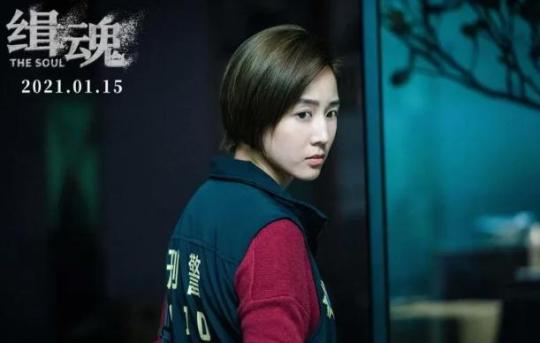
著名集团董事长王世聪惨死家中,负责此案的检察官梁文超(张震 饰)与妻子刑警阿爆(张钧甯 饰)在调查中得知:死者的儿子王天佑(林晖闵 饰),年轻的新婚妻子李燕(孙安可 饰),多年合伙人万宇凡(李铭顺 饰),甚至死去的前妻唐素贞(张柏嘉 饰),每个人之间都有着错综复杂的关联。阿爆更是发现隐藏在案件背后的惊人秘密……
发布日期: 2021–01–15
运行时间: 124 分钟
类型: 剧情, 惊悚, 悬疑
明星: Chang Chen, Janine Chang, Christopher Ming-Shun Lee, Anke Sun, Lu Hsueh-Feng
导演: Cheng Wei-Hao
PLAY>>> http://ver.yess-movie.com/movie/tt13598976/the-soul.html

TAGS:
缉魂 澳門上映
缉魂 2020上映
缉魂 HD線上看
缉魂 線上看小鴨
缉魂 电影完整版
缉魂 線上看下載
缉魂 2020 下載
缉魂 線上看完整版
缉魂 線上看完整版小鴨
缉魂 (2020)完整版本
缉魂 |1080P|完整版本
缉魂 线上看(2020)完整版
線上看(2020)完整版
缉魂 線上看電影(2020)
缉魂 2020年再次觀看電影
缉魂 線上看|2020上映|完整版小鴨|線上看小鴨|
缉魂 上看
缉魂 主題曲
缉魂 小鴨影音
缉魂 線上小鴨
缉魂 完整版本
缉魂 香港上映
缉魂 線上看小鴨影音
缉魂 2020 線上看
缉魂在线
缉魂 1080P 下載
缉魂 免費線上看電影
缉魂 电影在线2020年
缉魂 (2020)在线观看
缉魂 [2020]观看和下载
缉魂 [2020,HD]观看和下载
缉魂 singapora(2020) 完整版
缉魂 (The Soul) 2020上映
缉魂 (The Soul) HD線上看
缉魂 (The Soul) 線上看小鴨
缉魂 (The Soul) 电影完整版
缉魂 (The Soul) 線上看下載
缉魂 (The Soul) 2020 下載
缉魂 (The Soul) 線上看完整版小鴨
缉魂 (The Soul) (2020)完整版本
缉魂 (The Soul) |1080P|完整版本
缉魂 (The Soul) 线上看(2020)完整版
缉魂 (The Soul) 線上看(2020)完整版
缉魂 (The Soul)(2020)
缉魂 (The Soul)2020年再次觀看電影
缉魂 (The Soul) 線上看|2020上映|完整版小鴨|線上看小鴨|
缉魂 (The Soul) 澳門上映
缉魂 (The Soul) 2020上映
缉魂 (The Soul) HD線上看
缉魂 (The Soul) 線上看小鴨
缉魂 (The Soul) 电影完整版
缉魂 (The Soul) 線上看下載
缉魂 (The Soul) 2020 下載
缉魂 (The Soul)上看完整版
缉魂 (The Soul) 線上看完整版小鴨
缉魂 (The Soul) (2020)完整版本
缉魂 (The Soul) |1080P|完整版本
缉魂 (The Soul) 线上看(2020)完整版
缉魂 (The Soul) 線上看(2020)完整版
缉魂 (The Soul) 線上看電影(2020)
缉魂 (The Soul) 2020年再次觀看電影
缉魂 (The Soul) 線上看|2020上映|完整版小鴨|線上看小鴨|
缉魂 (The Soul) 上看
缉魂 (The Soul) 主題曲
缉魂 (The Soul) 小鴨影音
缉魂 (The Soul) 線上小鴨
缉魂 (The Soul) 完整版本
缉魂 (The Soul) 香港上映
缉魂 (The Soul) 線上看小鴨影音
缉魂 (The Soul) 2020 線上看
缉魂 (The Soul) 2020在线
缉魂 (The Soul) 1080P 下載
缉魂 (The Soul) 免費線上看電影
缉魂 (The Soul) 电影在线2020年
缉魂 (The Soul) (2020)在线观看
缉魂 (The Soul) [2020]观看和下载
缉魂 (The Soul) [2020,HD]观看和下载
缉魂 (The Soul) singapora(2020) 完整版
缉魂 (The Soul) 線上看| 2020最新電影| 小鴨影音|
缉魂 (The Soul) 免費下載
缉魂 (The Soul) 下載 百度
缉魂 (The Soul) 2020上看
缉魂 (The Soul) 免費線上看電影
缉魂 (The Soul) -完整版小鴨 HD
缉魂 (The Soul)上看(2020)
缉魂 (The Soul) 台灣上映 2020
缉魂 (The Soul) (2020) 線上看
缉魂 (The Soul)上(2020 HD)
缉魂 (The Soul) 2020 電影完整版
缉魂 (The Soul) 2020 線上 完整版
缉魂 (The Soul) -完整版 小鴨 2020
缉魂 (The Soul) 免費在線觀看(2020)
缉魂 (The Soul) [2020] 線上完整版
缉魂 (The Soul) 线上看(2020)完整版
缉魂 (The Soul)上 [2020] 完整版
缉魂 (The Soul) (2020)免費線上看電影
缉魂 (The Soul) 線上看線上(2020)完整版
缉魂 (The Soul) -HD 完整版 小鴨 [2020]
缉魂 (The Soul) 上看2020 HD.BD.1080p
缉魂 (The Soul) HD|1080p|4K| 香港流媒體
缉魂 (The Soul) 2020完整版 小鴨 (HD.BLURAY)
In 1889, on November 1 in Gotha, Germany Anna Therese Johanne Hoch, who later would be known as Hannah Hoch was born. Being the eldest of five children, the girl was brought up in a comfortable and quiet environment of the small town. Her parents, a supervisor in an insurance company and an amateur painter sent her to Girl’s High school. However, at the age of 15 Hannah had to quit studying for the long six years to take care of her newborn sister. Only in 1912 she continued her education with Harold Bengen in School of Applied Arts, mastering glass design. As the World War I broke up Hannah returned to the native town to work in the Red Cross.
The first years after war the young woman recommenced her studying, getting to know graphic arts. 1915 was highlighted by an acquaintance with an Austrian artist Raoul Hausmann, which grew into the long-lasting romantic relationship and involvement in Berlin Dada movement. For ten years till 1926 Hoch worked in Berlin’s major publisher of newspapers and magazines. Her task was to design embroidering, knitting and crocheting patterns for the booklets.
Being on vacation with her beloved in 1918, Hannah discovered ‘the principle of photomontage in cut-and-paste images that soldiers sent to their families’ (National gallery of Art). This find affected greatly on her artistic production, and she created mass-media photographs comprising the elements of photomontage and handwork patterns, thus combining traditional and modern culture. Her prior preoccupation was to represent the ‘new woman’ of the Weimar Republic with new social role and given freedoms.
Hoch was the only woman in Berlin Dada, who took part in all kinds of events and exhibitions showcasing her socially critical works of art. Till 1931 she participated in exhibitions but with the rise of National Social regime was forbidden to present her creative work. Till her last breath in 1978 Hannah Hoch lived and worked in the outskirts of Berlin-Heiligensee.
The piece of art which is going to be analyzed in this research is ‘The beautiful girl’ designed in 1919–1920. It combines the elements of technology and females. In the middle of the picture one can clearly see a woman dressed in a modern bathing suit with a light bulb on her head which probably serves as a sun umbrella. In the background a large advertisement with a woman’s hair-do on top is presented. Maud Lavin describes strange human as ‘she is part human, part machine, part commodity’ (Lavin). The woman is surrounded by the images of industrialization as tires, gears, signals and BMW logos. A woman’s profile with the cat eyes, untrusting and skeptical, in the upper right corner is eye-catching as well. This unusually large eye symbolizes DADA movement — a monocle, which is present in almost every Hoch’s work. The colour scheme does not offer rich palette of tints, including mostly black, white, orange and red pieces. The photo is surrounded by the BMW circles which add the spots of blue.
An apt description of the piece is given in the book ‘Cut with the Kitchen Knife’ and states that it is ‘a portrait of a modern woman defined by signs of femininity, technology, media and advertising’ (Lavin). In other words Hannah Hoch focused on the woman of the new age, free and keeping up with the fast-moving world. The artist promoted feministic ideas and from her point of view urbanization and modern technologies were meant to give hope to woman to gain equality of genders. With this photomontage she commented on how the woman was expected to combine the role of a wife and mother with the role of a worker in the industrialized world. The light bulb instead of a face shows that women were perceived as unthinking machines which do not question their position and can be turned on or off at any time at man’s will. But at the same time they were to remain attractive to satisfy men’s needs. The watch is viewed as the representation of how quickly women are to adapt to the changes.
In a nutshell, Hoch concentrated on two opposite visions of the modern woman: the one from the television screens — smoking, working, wearing sexy clothes, voting and the real one who remained being a housewife.
The beautiful girl’ is an example of the art within the DADA movement. An artistic and literal current began in 1916 as the reaction to World War I and spread throughout Northern America and Europe. Every single convention was challenged and bourgeois society was scandalized. The Dadaists stated that over-valuing conformity, classism and nationalism among modern cultures led to horrors of the World War I. In other words, they rejected logic and reason and turned to irrationality, chaos and nonsense. The first DADA international Fair was organized in Berlin in 1920 exposing a shocking discontentment with military and German nationalism (Dada. A five minute history).
Hannah Hoch was introduced to the world of DADA by Raoul Hausman who together with Kurt Schwitters, Piet Mondrian and Hans Richter was one of the influential artists in the movement. Hoch became the only German woman who referred to DADA. She managed to follow the general Dadaist aesthetic, but at the same time she surely and steadily incorporated a feminist philosophy. Her aim was to submit female equality within the canvass of other DADA’s conceptions.
Though Hannah Hoch officially was a member of the movement, she never became the true one, because men saw her only as ‘a charming and gifted amateur artist’ (Lavin). Hans Richter, an unofficial spokesperson shared his opinion about the only woman in their community in the following words: ‘the girl who produced sandwiches, beer and coffee on a limited budget’ forgetting that she was among the few members with stable income.
In spite of the gender oppressions, Hannah’s desire to convey her idea was never weakened. Difficulties only strengthened her and made her an outstanding artist. A note with these return words was found among her possessions: ‘None of these men were satisfied with just an ordinary woman. But neither were they included to abandon the (conventional) male/masculine morality toward the woman. Enlightened by Freud, in protest against the older generation. . . they all desired this ‘New Woman’ and her groundbreaking will to freedom. But — they more or less brutally rejected the notion that they, too, had to adopt new attitudes. . . This led to these truly Strinbergian dramas that typified the private lives of these men’ (Maloney).
Hoch’s technique was characterized by fusing male and female parts of the body or bodies of females from different epochs — a ‘traditional’ woman and ‘modern’, liberated and free of sexual stereotypes one. What’s more, combining male and female parts, the female ones were always more distinctive and vibrant, while the male ones took their place in the background. Hannah created unique works of art experimenting with paintings, collages, graphic and photography. Her women were made from bits and pieces from dolls, mannequins of brides or children as these members of the society were not considered as valuable.
Today Hannah Hoch is most associated with her famous photomontage ‘Cut with the kitchen knife DADA through the last Weimer Beer-Belly Cultural epoch of Germany’ (1919–1920). This piece of art highlights social confusion during the era of Weimar Republic, oppositionists and government radicals (Grabner). In spite of never being truly accepted by the rest of her society, this woman with a quiet voice managed to speak out loud her feministic message.
Looking at Hannah Hoch’s art for the first time I found it confusing, because couldn’t comprehend the meaning. It was quite obvious that every single piece and structure is a symbol of the era, its ideas and beliefs. However, after having learned about her life and constant endeavors to declare about female’s right, little by little I started to realize what’s what. As an object for research I chose ‘The beautiful girl’ as, to my mind, its theme and message intersects with the modern tendency: a successful, clever, beautiful and free woman has to become one in no time, cause the world is moving faster and faster. I enjoyed working with this artist as her example is inspiring and is worth following.
0 notes
Video
20240304_F0001: Little pollinating visitor by Wei-Feng Xue
Via Flickr:
- From travels #10YearsAgo in Sweden and macro photography in Uppsala botanic garden. It was summer pollination time and many insects, including this little fella, are covered with pollen grains.
0 notes
Video
vimeo
翠菓子TRYGOODZ from whatdafunk on Vimeo.
客戶Client | 豆之家食品科技股份有限公司 Beans Family
製作公司 Production House | 梅花鹿影業股份有限公司 SIKA FILMS CO. LTD
監製 Executive Producer | 李元禎 Bruce Lee
導演 Director | 丁肇輝 Wade Ding
製片 Producer | 黃柏蒼 Po Huang
執行製片 Line Producer|何佳儒 Jia Ru Ho
製片助理 Production Assistant|何芃萱 Peng Hsuan Ho
攝影 Director Of Photographer | 王淳宇 Danny Wang
攝大助 1st Assistant Cameraman|張維廷 Wei Ting Chang
攝影助理 Assistant Photography|葉辰威 Chen Wei Yeh
燈光 Gaffer | 尤泰偉 Tai Wei Yu
燈大助 1st Assistant Gaffer | 張嘉恆 Chia Heng Chang
燈光助理 Lighting Assistants | 黃運延 Yun Yen Huang / 張偉傑 Wei Jie Chang
美術 Production Designer | 紀孫霓 Ji Sun Ni
美術助理 Assistant Art Designer | 陳翔智 Hsiang Chih Chen
造型 Stylist | 邱紫瑄 Tzu Hsuan Chiu
造型助理 Stylist assistant| 王珮綺 Pei Chi Wang
收音 Sound|王子芸 Tzu Yun Wang
場務Grip|任傑 Chieh Jen
選角 Casting | 李向宇 Fish Li
剪接 Editor | 白欣田 Hsin Tien Pai
調光 Colorist | 李芷璇 Chih Hsuan Li
配樂 Music by | 林明學 Mitch Lin
配音 Voice Actor | 洪華笙 Gary Hung / 司可達 Scudder Smith
混音 Mix | 風華錄音室 Feng Hwa studio
錄音室 Studio | 風華錄音室 Feng Hwa studio
九巴 Driver|廖桑車隊 Mr. Liao
演員 Actor|蕭介文 Chieh Wen Hsiao / 邱采妮 Tsai Ni Chiu / 陳永輝 Yung Hui Chen /
傅允希 Yun His Fu / 黃雨晴 Yu Ching Huang / 陽昊恩 Drummond John Mason / 林佳娜 Tatiana / 崔璀璨Tristan / 朱耘麒 Yun Chi Chu / 鄭鈺鈴 Yu Ling Cheng / 戴立群 Li Chun Tai /
島田惠 Shimada Megumi
0 notes
Text
The Wave art gallery in China is wrapped by aluminium scales
Shanghai-based studio Lacime Architects has completed The Wave gallery on the coast of Tianjin, China, which is clad in thousands of aluminium tiles and resembles a giant surge of water.
The Wave encompasses 3563 square metres and was designed by Lacime Architects for Shimao as a cultural hub within the Binhai New Area district.
Its form was developed as a nod to its setting beside the Bohai Sea, evoking a wave crashing onto the shore, while its scale-like cladding is intended to glisten like ripples of water.
The Wave's setting in Binhai New Area, Tianjin. Top photo: the gallery's exterior
"The whole building resembles the wave to create a dialogue between the building and nature, and the building has become a symbolic existence where the sea and the earth converge," explained the Shanghai-based architecture studio.
"In this space, people, sea, air and the sunshine establish a closer connection."
A gallery's reflection in the surrounding shallow pool
The Wave's distinctive form is created from its Y-shaped second floor, which projects out from a two-storey plinth that is surrounded by a shallow pool of water.
To achieve this while keeping the building column-free, its structure comprises a central concrete core enveloped by a complex network of steel trusses. This was developed by Lacime Architects using parametric design technologies.
Visitors below a second-floor cantilever
The museum's cladding is made up of 13,000 pieces of aluminium tiles and designed to reflect light in different ways throughout the day to evoke ripples of water.
Playful patterns of light are also reflected onto the tiles from the pool of water below, enhancing its wave-like form.
Aluminium tiles wrap the building
Visitors to the museum enter into the building's central concrete core containing a dark entrance lobby lit by an overhead skylight.
Here there are three water-curtain features and stainless steel detailing, which conceal the museum's stairs and elevators and are intended to offer "a quiet visual-tactile experience".
Above, the first floor of the building contains a bathroom and meeting room, while the second floor houses the main gallery spaces, alongside outdoor terraces, a library and bar.
The interior finishes for the upper floor are highly decorative – ranging from ceilings adorned with fabric, highly-polished floors and curvaceous furnishings and bubble-like sculptures that the studio modelled on "water in different states".
The dark entrance lobby
The museum's upper floor is also wrapped by large curtain walls that change in size with the undulating form of the building's exterior, spanning up to eight metres in height.
Lacime Architects introduced the curtain wall to maximise natural light and provide visitors with a sea view and connection to the outside, creating a stark contrast to the ground floor lobby.
The decorative second-floor bar area
As part of the project, Lacime Architects also created two pavilions and outdoor spaces that surround the museum. This includes seating areas, a children's play zone and an outdoor theatre.
One of the pavilions is positioned in the sea, accessed via a boardwalk, to encourage visitors to sit and listen to the "sounds of nature".
A view of The Wave and the floating pavilion
Lacime Architects was founded in Shanghai in 2001 by architect Zhaoqing Song. It also recently completed the Shimao Longyin Leisure Centre, which is surrounded by reflective pools that reference classical Chinese gardens.
Photography is by CAAI.
Project credits:
Architect: Lacime Architects Beijing
Client: Shimao
Lead architects: Song Zhaofang
Design team: Pan Xiaobo, Wu Shuguang, Ren Yue, Luo Jia, Liu Wenfeng, Feng Bo, Zhu Tianpeng, Wei Mengrou, Yang Dehe and Shen Chenyun
Gallery design: Wu Shuguang, Pan Peicheng, Xu Tao, Zhang Chende, Dong Liangchen and Tu Yuxuan
Construction design: Tianjin Tianyou Architectural Design
Structure design: Yuan Xin Engineering Consultant
Landspace design: Tianjin Donglin Zhujing Landscape Planning and Design
Interior design: Shanghai Biyu Environmental Art Design Office
Curtain wall design: Shanghai Hengli Construction Decoration Engineering
BIM design: Beijing Interconnection Cube Technology Service
Structure construction: Tianyuan Construction Group
Curtain wall construction: Beijing Tiancheng Yingliang Stone
The post The Wave art gallery in China is wrapped by aluminium scales appeared first on Dezeen.
0 notes
